QNAP QuTS Hero Software
The QNAP TS-873A can utilize one of two software stacks. First, it can utilize the standard QuTS that comes installed by default.
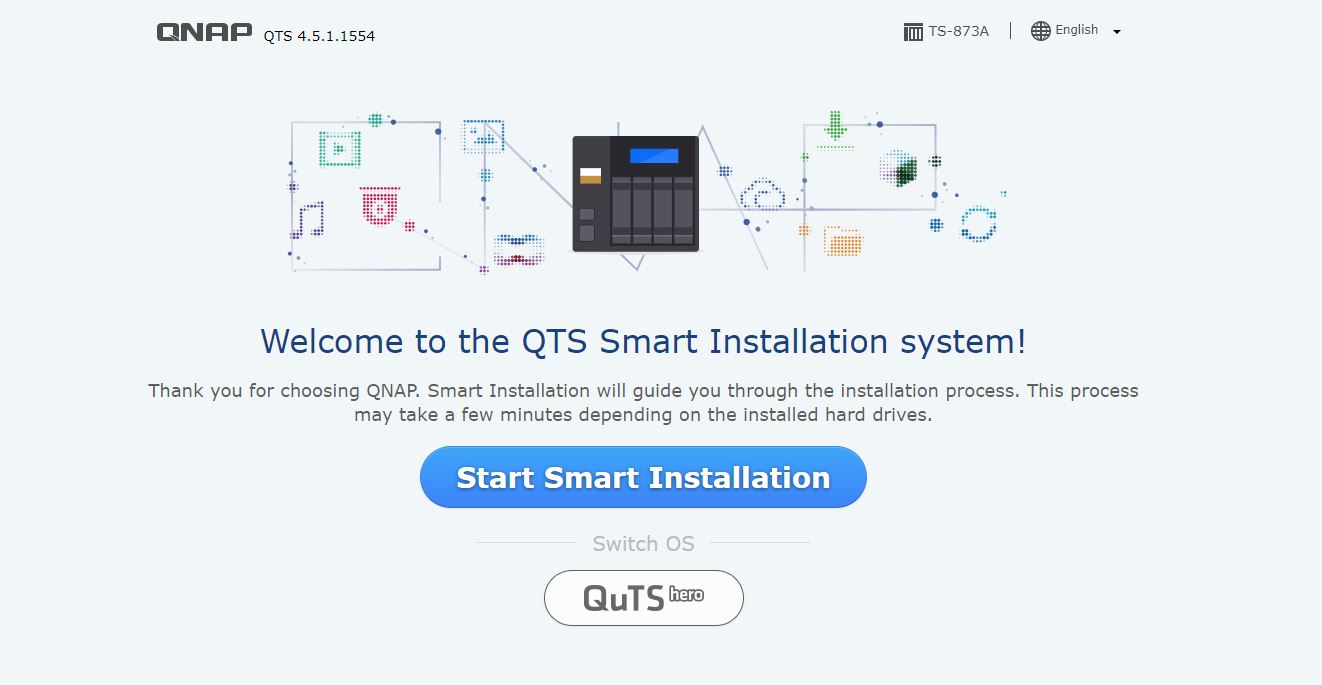
We wanted to go a bit further and look at QuTS hero that is more of a ZFS-based solution. This solution combines the ease-of-use and many of the higher-level management features of QNAP’s traditional offering but adds ZFS as the back-end storage. For those who want that emphasis on ease of use, but also want ZFS underneath, QuTS hero is the company’s answer. We are going to have a number of screenshots showing off a bit of the features and functionality. There is frankly too much to go over in this review.
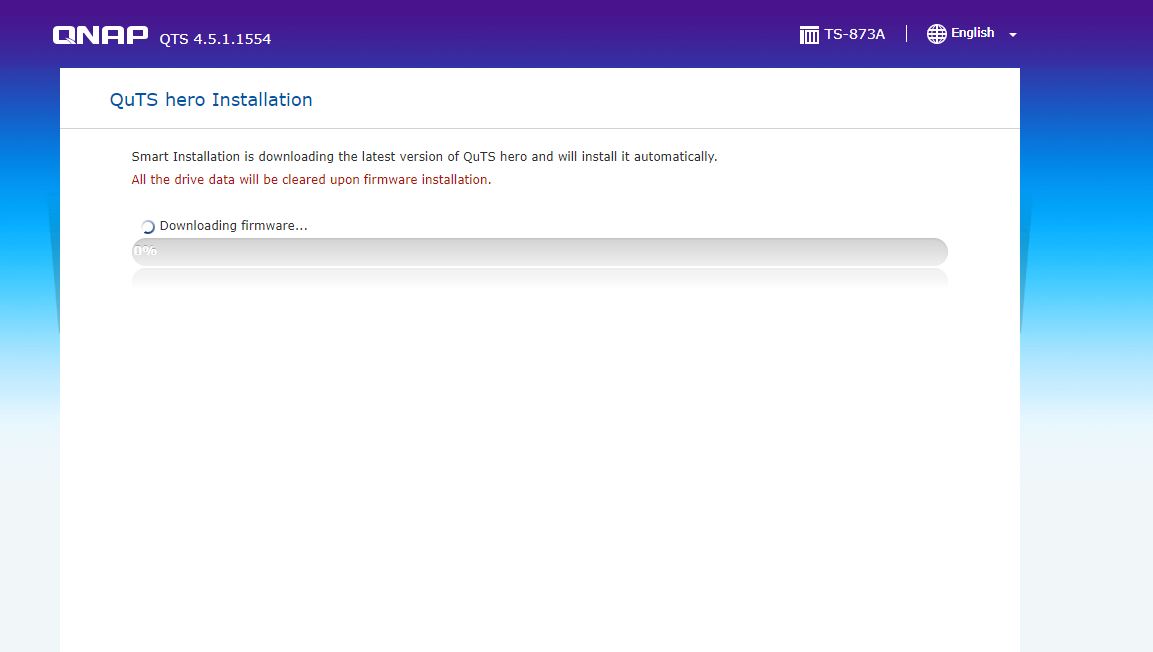
The switch is not fast, but we wanted to just give it a try and for a setup option, this gives an easy way to switch. For many that build solutions on solutions such as TrueNAS to get ZFS, QNAP has a solution that one can quickly switch to.
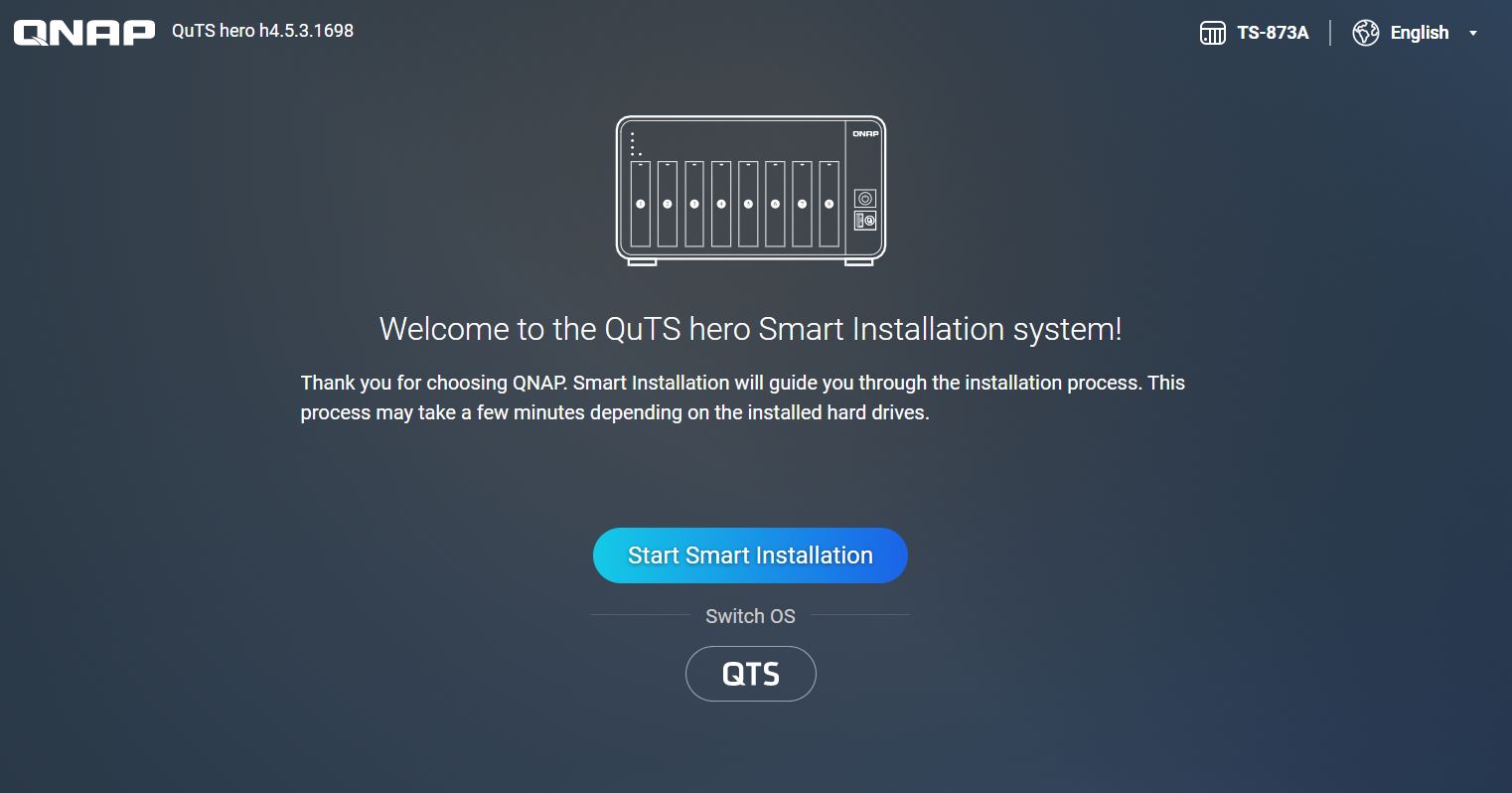
Installing the system and even switching between the two OSes is available via the web browser so it is a very simple process. Using either QuTS or QuTS hero one will eventually go through a wizard and end up at a logon screen.
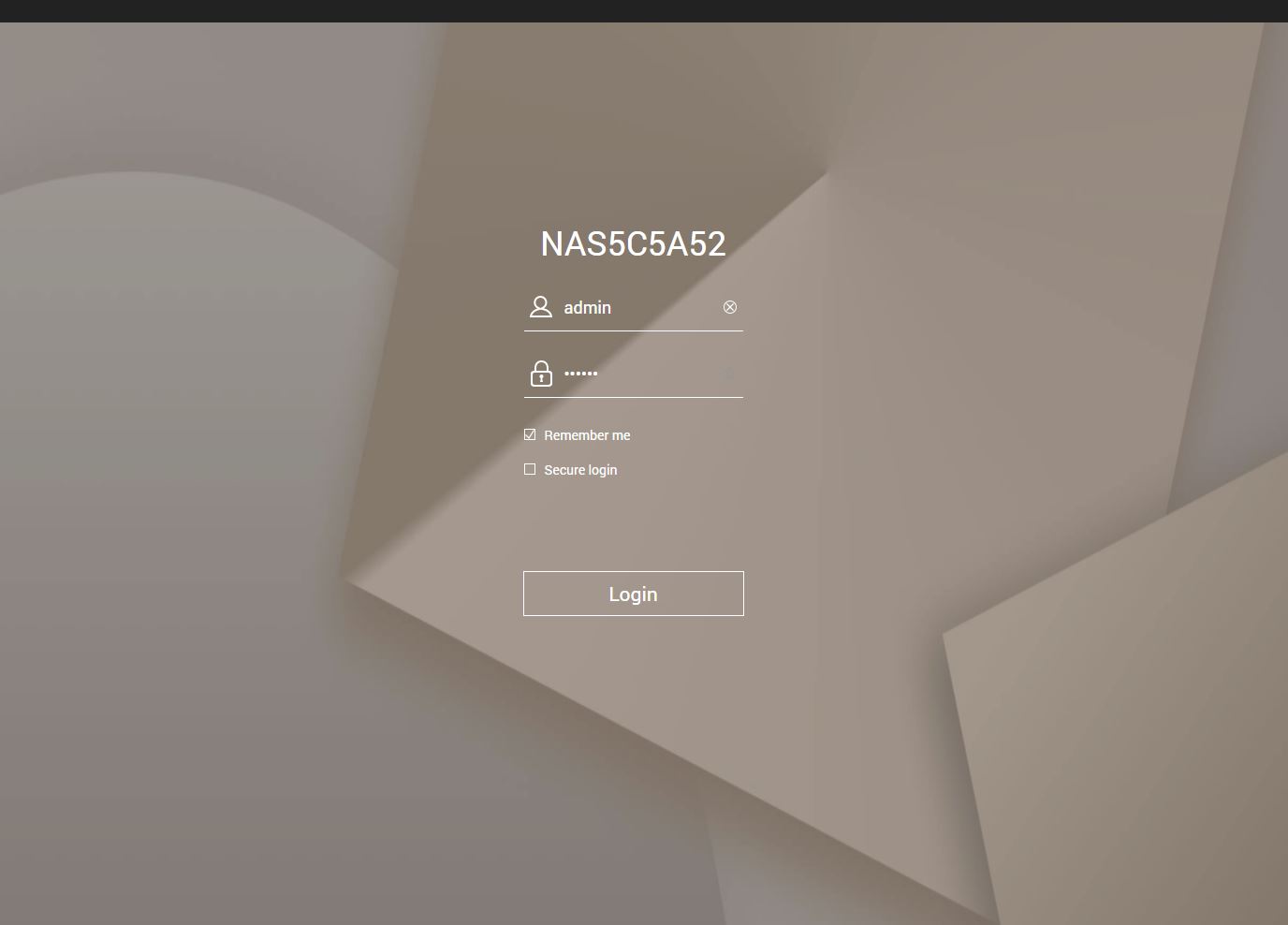
The management experience makes a lot of the web-based solutions look a bit old-fashioned. Perhaps better said, the management experience feels like running a desktop environment in one’s browser. The organization of key features makes a lot of sense. When it is time to bring up decisions that require technical jargon, there are generally tool tips and diagrams showing the implications of these decisions.
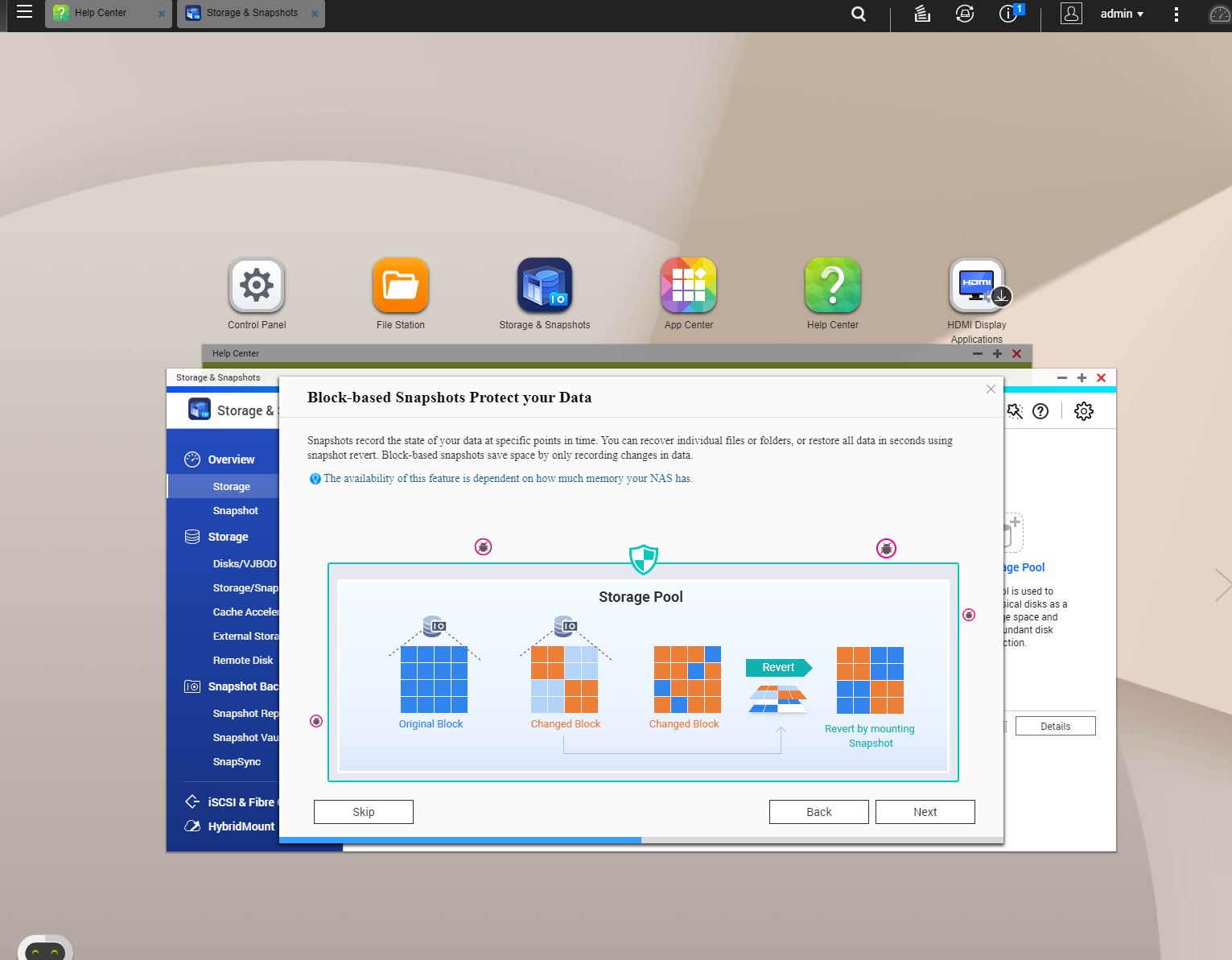
For an experienced systems administrator, these will be easy to quickly navigate. For those who do not have much experience, QNAP does a very good job of explaining concepts.
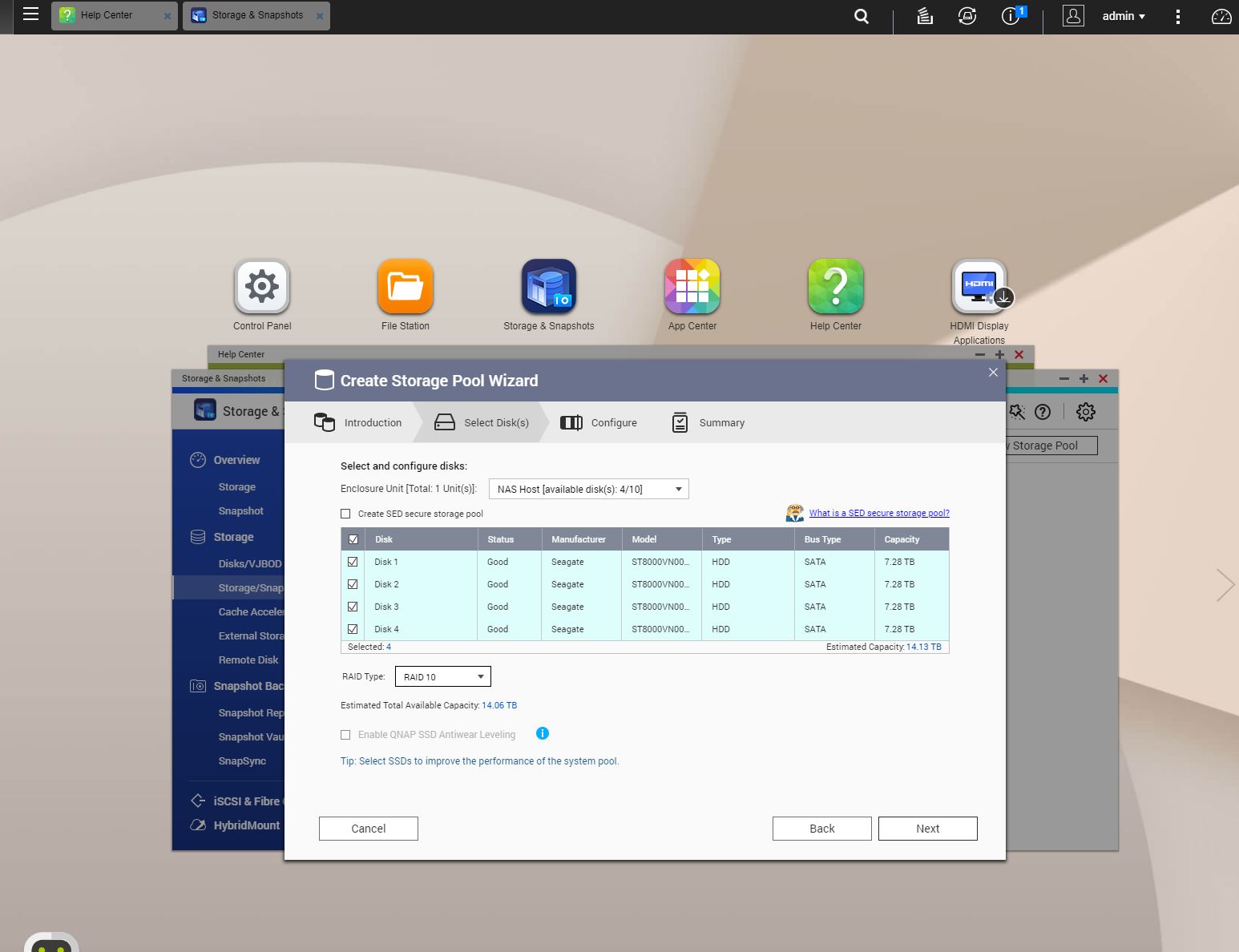
A good example of this is when adding ZFS storage pools in QuTS hero. There can be a daunting number of options but these have explanations as well as recommended defaults.
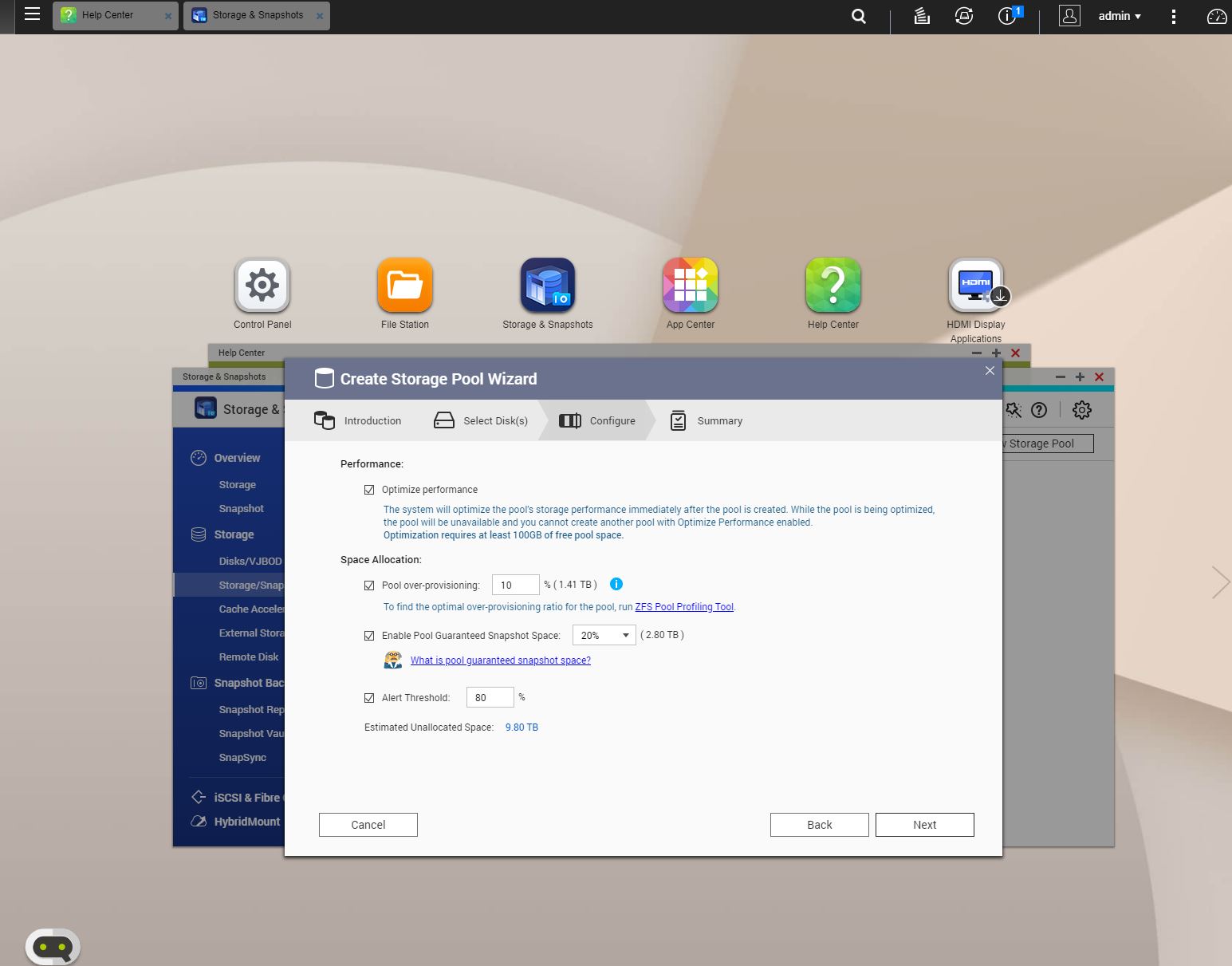
One of the really interesting parts of the solution is that by default, QNAP enables compression. One can optionally enable deduplication on data sets as well. This is ZFS functionality that is added with little fanfare, just a simple switch.
QNAP has an extensive set of software solutions. This includes a large selection of apps in the App Center. For admins who just need a simple click-to-install experience, this is a great option.
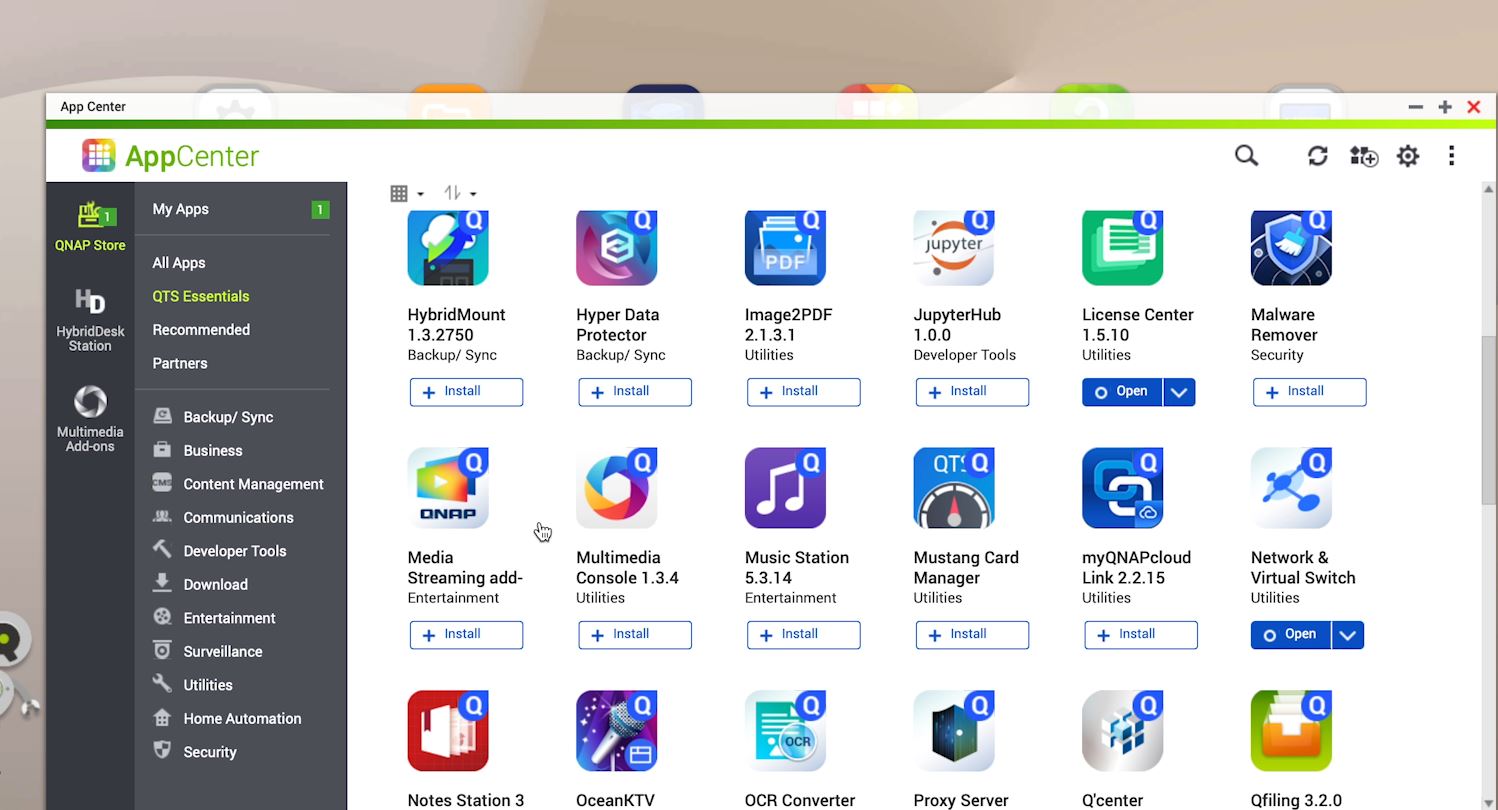
While one can host applications, VMs, and containers locally, the solution can also be used to connect to other virtualization hosts. QNAP has step-by-step guides for doing this work as well.
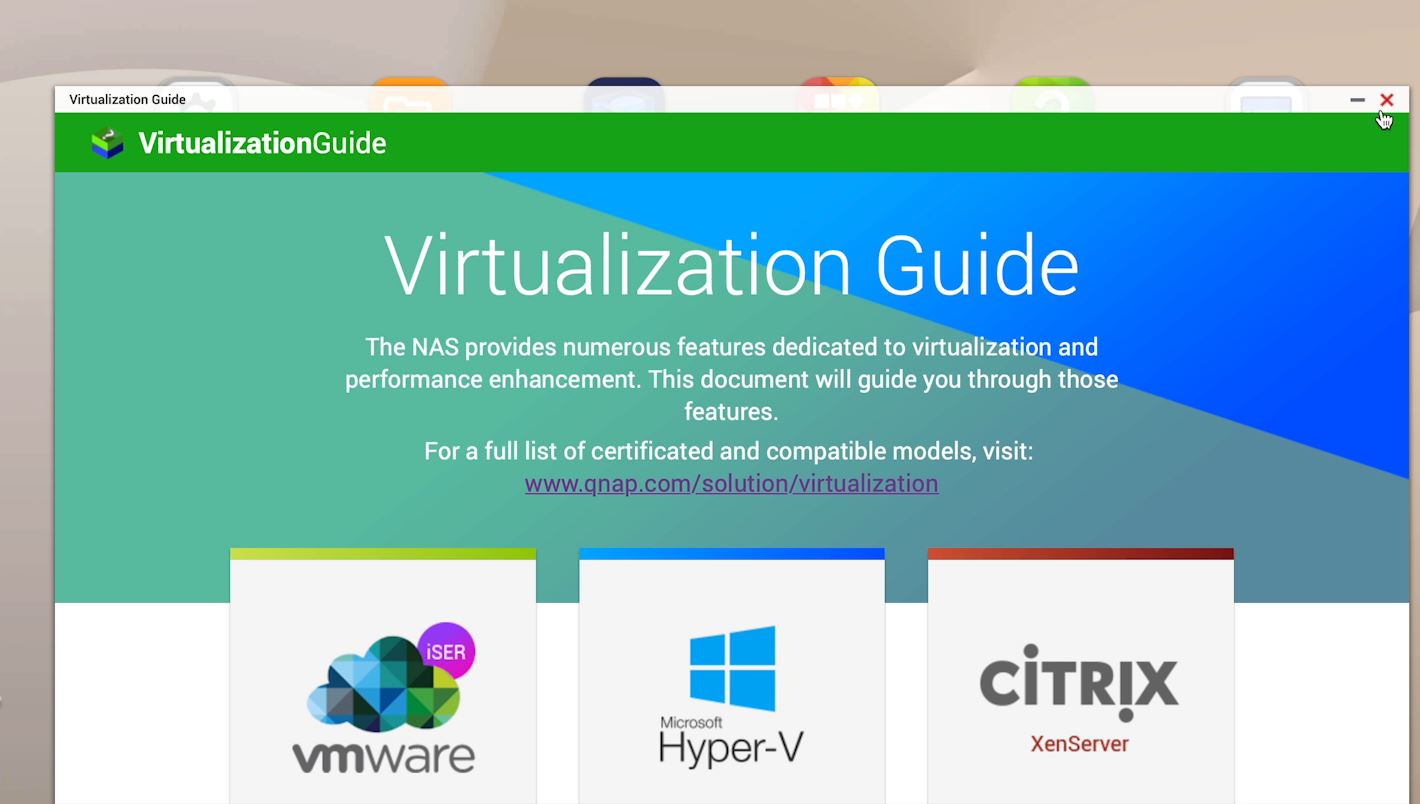
Overall, the key here is that QNAP is focused on building an extremely easy-to-manage solution even if one has little experience with storage management. All of this functionality does mean that there are additional security surfaces to secure which goes along with having that extra functionality. Still, this is a significantly easier experience for a novice admin or one that does not administer a QNAP NAS daily to work with since there are wizards, suggestions, and well-explained tool tips throughout the web GUI.
Next, we are going to discuss performance, power consumption, and noise before moving to our final words.




I love TrueNAS, and the TrueNAS Mini’s have 10g on some of them. You can add a 10g card and still be close to the 4 bay mini x+ and xl+ pricing and have ZFS with QNAP.
I really wish QNAP did ceph or gluster so you could scale these out
QNAP always seemed to me a rather grasping and feature splitting company. Overpriced for what you get. This thing is in essence a PC in a special case… the SOC has dual 10GbE, so QNAP equips it with a pair of third party 2.5 GbE. Really gotta shake my head at that. I presume QNAP thinks it can make more money selling you a PCIe 10GbE AIC.
Honestly if one is competent enough to configure one of these things then one is probably competent enough to repurpose an old PC into a Linux or Windows server and save a substantial amount of money.
So few companies use the AMD 10g in the Zen chips that there’s gotta be something wrong beyond the lack of SR-IOV that STH has talked about before.
This is probably the box I would get for my home office (can i get a yay for work-from-home getting extended?)
I do not find the windows inside of windows inside of Windows user interface modern. I could l overlook that annoyance, but periodically the QNAP software here forgets what routes go to which Ethernet connections and I have to open the interface on the net that works, delete and then recreate the nonfunctional routes.
Since the present review is for what is essentially a PC in a nice box without a video card, it would be good to know how easy (or possible) it is to install Linux to create an open-source NAS that leads to auditable security and fixable bugs.
What pratt thought it a good idea to put the power button next to an area where you push things in and out?
Major design fail
Hoohoo: would you be saving money though? The idle electricity use of this box is only 25 watts, that’s pretty good. Repurposing an old PC means you need a place to put the giant box, and you’re going to use much more electricity. The thing I love about this box is that it fits nicely in my TV cabinet where my cable is coming into the house, where my cable modem, router, and everything else are located, so it sits discretely in my living room, don’t think I could accomplish that by repurposing my old gaming PC.